- Home
- Terry Pratchett
The Carpet People
The Carpet People Read online
TERRY
PRATCHETT
CORGI BOOKS
Contents
Cover
Title
Copyright
Dedication
Books by Terry Pratchett
Author’s Note
Prologue
Chapter 1
Chapter 2
Chapter 3
Chapter 4
Chapter 5
Chapter 6
Chapter 7
Chapter 8
Chapter 9
Chapter 10
Chapter 11
Chapter 12
Chapter 13
Chapter 14
Chapter 15
Chapter 16
Chapter 17
Chapter 18
Chapter 19
Chapter 20
About the Author
This eBook is copyright material and must not be copied, reproduced, transferred, distributed, leased, licensed or publicly performed or used in any way except as specifically permitted in writing by the publishers, as allowed under the terms and conditions under which it was purchased or as strictly permitted by applicable copyright law. Any unauthorised distribution or use of this text may be a direct infringement of the author’s and publisher’s rights and those responsible may be liable in law accordingly.
Version 1.0
Epub ISBN 9781407042701
www.randomhouse.co.uk
THE CARPET PEOPLE
A CORGI BOOK 9780552551052
First published in Great Britain in 1971 by Colin Smythe Ltd
Revised edition published 1992 by Doubleday
an imprint of Random House Children’s Books
Doubleday edition published 1992
Corgi edition published 1993
Reissued 2004
9 10 8
Copyright © 1971 by Colin Smythe Ltd
Copyright © by Terry and Lyn Pratchett, 1992
Decorations copyright © by David Wyatt, 2004
The right of Terry Pratchett to be identified as the author of this work has been asserted in accordance with the Copyright, Designs and Patents Act 1988.
All rights reserved. No part of this publication may be reproduced, stored in a retrieval system, or transmitted in any form or by any means, electronic, mechanical, photocopying, recording or otherwise, without the prior permission of the publishers.
The Random House Group Limited makes every effort to ensure that the papers used in our books are made from trees that have been legally sourced from well-managed and credibly certified forests. Our paper procurement policy can be found on www.randomhouse.co.uk/paper.htm.
Corgi Books are published by Random House Children’s Books, 61-63 Uxbridge Road, London W5 5SA, A Random House Group Company
Addresses for companies within The Random House Group Limited can be found at: www.randomhouse.co.uk/offices.htm
THE RANDOM HOUSE GROUP Limited Reg. No. 954009 www.kidsatrandomhouse.co.uk
A CIP catalogue record for this book is available from the British Library.
Printed and bound in Great Britain by Cox & Wyman Ltd, Reading, Berkshire
To Lyn, for then and now.
‘Told with Pratchett’s customary wit plus touches of cynicism. It’s a winner’ School Librarian
‘A unique piece of high fantasy’ Vector
‘Aimed at the over-tens but, like his Discworld novels, breaks all the boundaries between young and adult readership’ Daily Mail
The Carpet People was first written when the author was a teenager and published in 1971. Retaining the original characters and the story, whilst adding the inimitable touch of comic fantasy that has gathered him legions of fans worldwide, Terry Pratchett revised it extensively for a new edition, which was published in hardcover in 1992.
www.kidsatrandomhouse.co.uk/terrypratchett
Books by Terry Pratchett
THE BROMELIAD TRILOGY (containing TRUCKERS, DIGGERS and WINGS)
TRUCKERS*
DIGGERS*
WINGS*
THE CARPET PEOPLE*
THE JOHNNY MAXWELL TRILOGY (containing ONLY YOU CAN SAVE MANKIND, JOHNNY AND THE DEAD and JOHNNY AND THE BOMB)
ONLY YOU CAN SAVE MANKIND*
JOHNNY AND THE DEAD*
JOHNNY AND THE BOMB*
JOHNNY AND THE DEAD playscript (adapted by Stephen Briggs)
Discworld for younger readers
A HAT FULL OF SKY*
THE WEE FREE MEN*
THE AMAZING MAURICE AND HIS EDUCATED RODENTS*
THE AMAZING MAURICE AND HIS EDUCATED RODENTS playscript (adapted by Stephen Briggs)
For adults of all ages
The Discworld® series
THE COLOUR OF MAGIC*
THE LIGHT FANTASTIC*
EQUAL RITES*
MORT*
SOURCERY*
WYRD SISTERS*
PYRAMIDS*
GUARDS! GUARDS!*
ERIC*¥
MOVING PICTURES*
REAPER MAN*
WITCHES ABROAD*
SMALL GODS*
LORDS AND LADIES*
MEN AT ARMS*
SOUL MUSIC*
INTERESTING TIMES*
MASKERADE*
FEET OF CLAY*
HOGFATHER*
JINGO*
THE LAST CONTINENT*
CARPE JUGULUM*
THE FIFTH ELEPHANT*
THE TRUTH*
THIEF OF TIME*
NIGHT WATCH*
MONSTROUS REGIMENT*
THE COLOUR OF MAGIC – GRAPHIC NOVEL
THE LIGHT FANTASTIC – GRAPHIC NOVEL
MORT: A DISCWORLD BIG COMIC (illustrated by Graham Higgins)¥
GUARDS! GUARDS!: A DISCWORLD BIG COMIC (adapted by Stephen Briggs, illustrated by Graham Higgins)¥
SOUL MUSIC: THE ILLUSTRATED SCREENPLAY
WYRD SISTERS: THE ILLUSTRATED SCREENPLAY
MORT – THE PLAY (adapted by Stephen Briggs)
WYRD SISTERS – THE PLAY (adapted by Stephen Briggs)
MEN AT ARMS – THE PLAY (adapted by Stephen Briggs)
GUARDS! GUARDS! – THE PLAY (adapted by Stephen Briggs)
MASKERADE (adapted for the stage by Stephen Briggs)
CARPE JUGULUM (adapted for the stage by Stephen Briggs)
LORDS AND LADIES (adapted for the stage by Irana Brown)
INTERESTING TIMES (adapted by Stephen Briggs)
THE FIFTH ELEPHANT (adapted by Stephen Briggs)
THE TRUTH (adapted by Stephen Briggs)
THE SCIENCE OF DISCWORLD (with Ian Stewart and Jack Cohen)
THE SCIENCE OF DISCWORLD II: THE GLOBE (with Ian Stewart and Jack Cohen)
THE DISCWORLD COMPANION (with Stephen Briggs)¥
THE STREETS OF ANKH-MORPORK (with Stephen Briggs)
THE DISCWORLD MAPP (with Stephen Briggs)
A TOURIST GUIDE TO LANCRE – A DISCWORLD MAPP (with Stephen Briggs and Paul Kidby)
DEATH’S DOMAIN (with Paul Kidby)
NANNY OGG’S COOKBOOK
THE PRATCHETT PORTFOLIO (with Paul Kidby)¥
THE LAST HERO (with Paul Kidby)¥
GOOD OMENS (with Neil Gaiman)
STRATA
THE DARK SIDE OF THE SUN
THE UNADULTERATED CAT (illustrated by Gray Jolliffe)¥
* also available in audio ¥ published by Victor Gollancz
published by Samuel French published by Methuen Drama
published by Ebury Press published by Oxford University Press
Author’s Note
This book had two authors, and they were both the same person.
The Carpet People was published in 1971. It had a lot of things wrong with it, mostly to do with being written by someone wh
o was seventeen at the time.
And it sold a bit, and eventually it sold out. And that was it.
And then about seven years ago the Discworld books began to sell, and people would buy them and say, ‘Here, what’s this book The Carpet People by The Same Author?’ and the publishers got so fed up with telling people that there was no demand for it that they decided it was time for a new edition.
Which was read by Terry Pratchett, aged forty-three, who said: hang on. I wrote that in the days when I thought fantasy was all battles and kings. Now I’m inclined to think that the real concerns of fantasy ought to be about not having battles, and doing without kings. I’ll just rewrite it here and there . . .
Well, you know how it is when you tweak a thread that’s hanging loose . . .
So this is it. It’s not exactly the book I wrote then. It’s not exactly the book I’d write now. It’s a joint effort but, heh heh, I don’t have to give him half the royalties. He’d only waste them.
You asked for it. Here it is. Thanks.
Incidentally, the size of the city of Ware is approximately→.
Terry Pratchett 15
September 1991
Prologue
They called themselves the Munrungs. It meant The People, or The True Human Beings.
It’s what most people call themselves, to begin with. And then one day the tribe meets some other people, and gives them a name like The Other People or, if it’s not been a good day, The Enemy. If only they’d think up a name like Some More True Human Beings, it’d save a lot of trouble later on.
Not that the Munrungs were in any way primitive. Pismire said they had a rich native cultural inheritance. He meant stories.
Pismire knew all the old stories and many new ones and used to tell them while the whole tribe listened, enthralled, and the night-time fires crumbled to ashes.
Sometimes it seemed that even the mighty hairs that grew outside the village stockade listened, too. They seemed to crowd in closer.
The oldest story was the shortest. He did not tell it often, but the tribe knew it by heart. It was a story told in many languages, all over the Carpet.
‘In the beginning,’ said Pismire, ‘there was nothing but endless flatness. Then came the Carpet, which covered the flatness. It was young in those days. There was no dust among the hairs. They were slim and straight, not bent and crusty like they are today. And the Carpet was empty.
‘Then came the dust, which fell upon the Carpet, drifting among the hairs, taking root in the deep shadows. More came, tumbling slowly and with silence among the waiting hairs, until the dust was thick in the Carpet.
‘From the dust the Carpet wove us all. First came the little crawling creatures that make their dwellings in burrows and high in the hairs. Then came the soraths, and the weft borers, tromps, goats, gromepipers and the snargs.
‘Now the Carpet had life and noise. Yes, and death and silence. But there was a thread missing from the weave on the loom of life.
‘The Carpet was full of life, but it did not know it was alive. It could be, but it could not think. It did not even know what it was.
‘And so from the dust came us, the Carpet People. We gave the Carpet its name, and named the creatures, and the weaving was complete. We were the first to give the Carpet a name. Now it knew about itself.
‘Though Fray, who hates life in the Carpet, may tread upon us, though shadows grow over us, we are the soul of the Carpet, and that is a mighty thing. We are the fruit of the loom.
‘Of course, this is all metaphorical but I think it’s important, don’t you?’
Chapter 1
It was the Law that, every tenth year, the people of all the tribes in the Dumii Empire should come and be Counted.
They did not go all the way to the great capital city of Ware, but to the little walled town of Tregon Marus.
The Counting was always a great occasion. Tregon Marus would double in size and importance overnight as tribal tents were pitched outside its walls. There was a horse market, and a five-day fair, old friends to be met, and a flood of news to be exchanged.
And there was the Counting itself. New names were added to the crackling scrolls which, the people like to believe, were taken to Ware, even to the Great Palace of the Emperor himself. The Dumii clerks laboriously wrote down how many pigs and goats and tromps everybody had, and one by one the people shuffled on to the next table and paid their taxes in furs and skins. That was the unpopular part. So the queue wound round Tregon Marus, in at the East Gate, through the postern and stables, across the market square, and through the countinghouse. Even the youngest babies were carried past the clerks, for the quill pens to wobble and scratch their names on the parchment. Many a tribesman got a funny name because a clerk didn’t know how to spell, and there’s more of that sort of thing in History than you might expect.
On the fifth day the Governor of the town called all the tribal chieftains to an audience in the market square, to hear their grievances. He didn’t always do anything about them, but at least they got heard, and he nodded a lot; and everyone felt better about it at least until they got home. This is politics.
That was how it had always happened, time out of mind.
And on the sixth day the people went back to their homes, along the roads the Dumii had built. They went east. Behind them the road went west, until it came to the city of Ware. There it was just one of the many roads that entered the city. Beyond Ware it became the West Road, becoming narrower and more winding until it reached the furthermost western outpost of Rug.
Such was the Dumii Empire. It covered almost all of the Carpet from the Woodwall to the wasteland near Varnisholme in the north.
In the west it bordered Wildland and the uttermost fringes of the Carpet, and southwards the roads ran as far as the Hearthlands. The painted people of the Wainscot, the warlike Hibbolgs, even the fire-worshippers of Rug, all paid their tribute to the Emperor.
Some of them didn’t like the Dumii much, usually because the Empire discouraged the small wars and cattle raids which, in the outlying regions, were by way of being a recreational activity. The Empire liked peace. It meant that people had enough time to earn money to pay their taxes. On the whole, peace seemed to work.
So the Munrung tribe went east, and passed out of the chronicles of the Empire for another ten years. Sometimes they quarrelled among themselves, but on the whole they lived peacefully and avoided having much to do with history, which tends to get people killed.
Then, one year, no more was heard from Tregon Marus . . .
Old Grimm Orkson, chieftain of the Munrungs, had two sons. The eldest, Glurk, succeeded his father as chieftain when old Orkson died.
To the Munrung way of thinking, which was a slow and deliberate way, there couldn’t have been a better choice. He looked just like a second edition of his father, from his broad shoulders to his great thick neck, the battering centre of his strength. Glurk could throw a spear further than anyone. He could wrestle with a snarg, and wore a necklace of their long yellow teeth to prove it. He could lift a horse with one hand, run all day without tiring, and creep up so close to a grazing animal that sometimes they’d die of shock before he had time to raise his spear. Admittedly he moved his lips when he was thinking, and the thoughts could be seen bumping against one another like dumplings in a stew, but he was not stupid. Not what you’d call stupid. His brain got there in the end. It just went the long way round.
‘He’s a man of few words, and he doesn’t know what either of them mean,’ people said, but not when he was within hearing.
One day towards evening he was tramping homeward through the dusty glades, carrying a bone-tipped hunting spear under one arm. The other arm steadied the long pole that rested on his shoulder.
In the middle of the pole, its legs tied together, dangled a snarg. At the other end of the pole was Snibril, Glurk’s younger brother.
Old Orkson had married early and lived long, so a wide gap filled by a string of
daughters, that the chieftain had carefully married off to upright and respected and above all well-off Munrungs, separated the brothers.
Snibril was slight, especially compared with his brother. Grimm had sent him off to the strict Dumii school in Tregon Marus to become a clerk. ‘He can’t hardly hold a spear,’ he said, ‘maybe a pen’d be better. Get some learning in the family.’
When Snibril had run away for the third time Pismire came to see Grimm.
Pismire was the shaman, a kind of odd-job priest.
Most tribes had one, although Pismire was different. For one thing, he washed all the bits that showed at least once every month. This was unusual. Other shamen tended to encourage dirt, taking the view that the grubbier, the more magical.
And he didn’t wear lots of feathers and bones, and he didn’t talk like the other shamen in neighbouring tribes.
Other shamen ate the yellow-spotted mushrooms that were found deep in the hair thickets and said things like: ‘Hiiiiyahyahheya! Heyaheyayahyah! Hngh! Hngh!’ which certainly sounded magical.
Pismire said things like, ‘Correct observation followed by meticulous deduction and the precise visualization of goals is vital to the success of any enterprise. Have you noticed the way the wild tromps always move around two days ahead of the sorath herds? Incidentally, don’t eat the yellow-spotted mushrooms.’
Which didn’t sound magical at all, but worked a lot better and conjured up good hunting. Privately some Munrungs thought good hunting was more due to their own skill. Pismire encouraged this view. ‘Positive thinking,’ he would say, ‘is also very important.’
He was also the official medicine man. He was a lot better, they agreed (but reluctantly, because the Munrungs respected tradition) than the last one they had had, whose idea of medicine was to throw some bones in the air and cry ‘Hyahyahyah! Hgn! Hgn!’ Pismire just mixed various kinds of rare dust in a bowl, made it into pills, and said things like ‘Take one of these when you go to bed at night and another one if you wake up in the morning.’
And occasionally he offered advice on other matters.

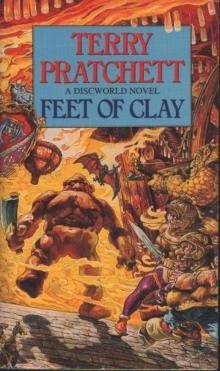 Feet of Clay
Feet of Clay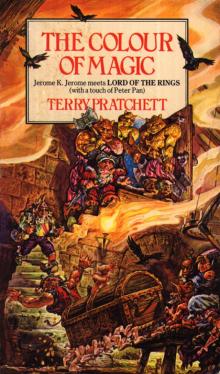 The Color of Magic
The Color of Magic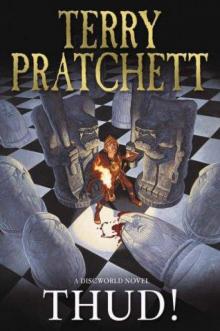 Thud!
Thud! Good Omens: The Nice and Accurate Prophecies of Agnes Nutter, Witch
Good Omens: The Nice and Accurate Prophecies of Agnes Nutter, Witch I Shall Wear Midnight
I Shall Wear Midnight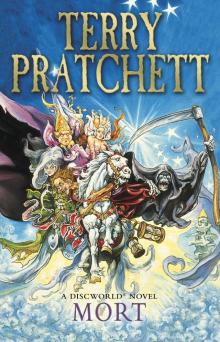 Mort
Mort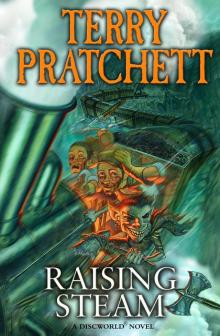 Raising Steam
Raising Steam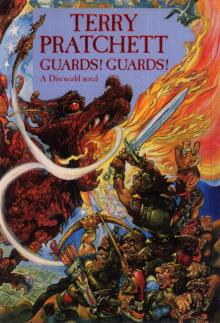 Guards! Guards!
Guards! Guards!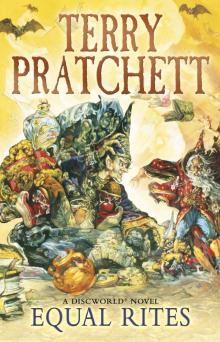 Equal Rites
Equal Rites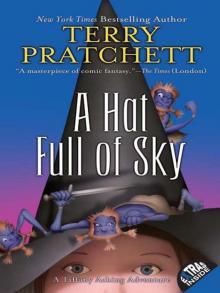 A Hat Full of Sky
A Hat Full of Sky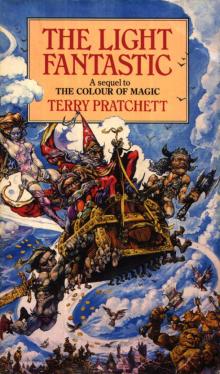 The Light Fantastic
The Light Fantastic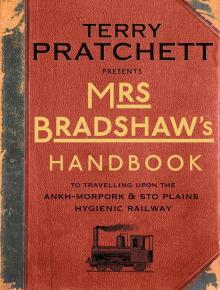 Mrs Bradshaw's Handbook
Mrs Bradshaw's Handbook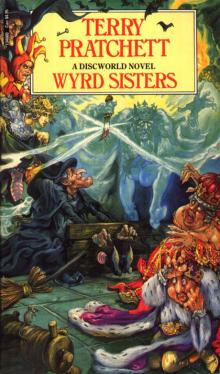 Wyrd Sisters
Wyrd Sisters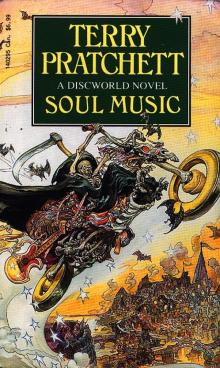 Soul Music
Soul Music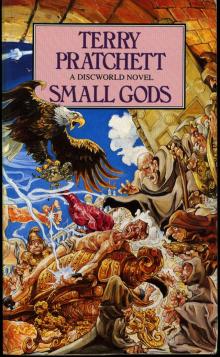 Small Gods
Small Gods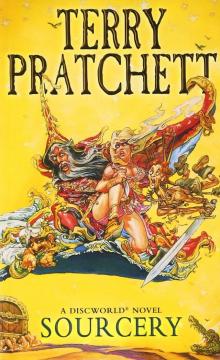 Sourcery
Sourcery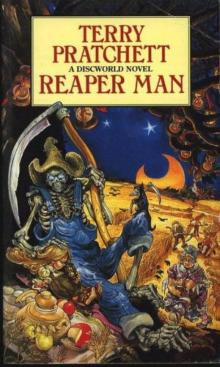 Reaper Man
Reaper Man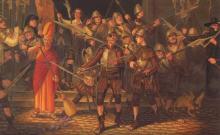 Night Watch
Night Watch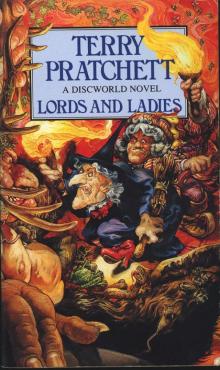 Lords and Ladies
Lords and Ladies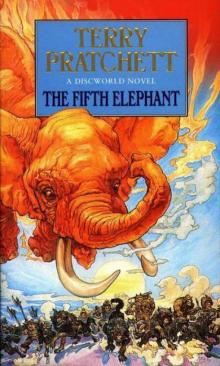 The Fifth Elephant
The Fifth Elephant Monstrous Regiment
Monstrous Regiment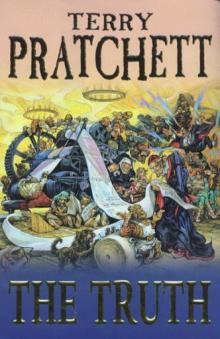 The Truth
The Truth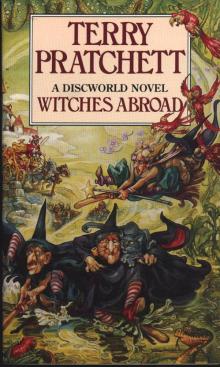 Witches Abroad
Witches Abroad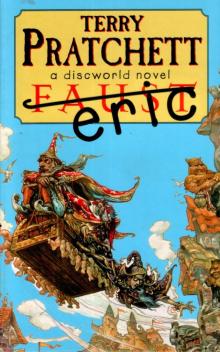 Eric
Eric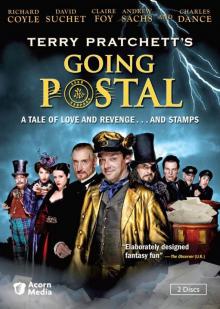 Going Postal
Going Postal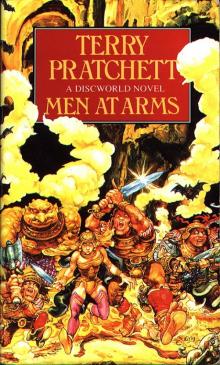 Men at Arms
Men at Arms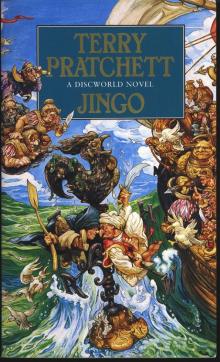 Jingo
Jingo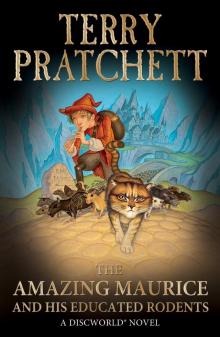 The Amazing Maurice and His Educated Rodents
The Amazing Maurice and His Educated Rodents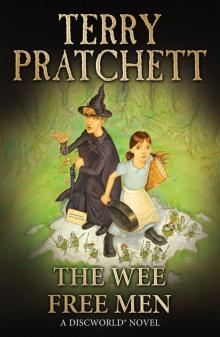 The Wee Free Men
The Wee Free Men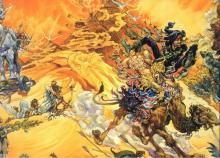 Pyramids
Pyramids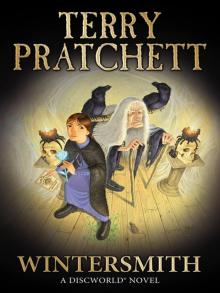 Wintersmith
Wintersmith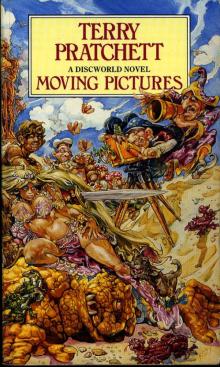 Moving Pictures
Moving Pictures Carpe Jugulum
Carpe Jugulum Interesting Times
Interesting Times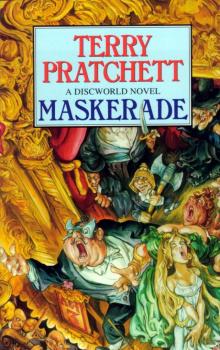 Maskerade
Maskerade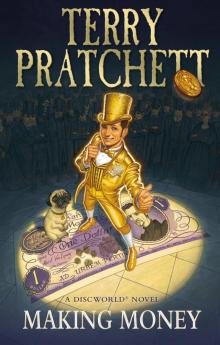 Making Money
Making Money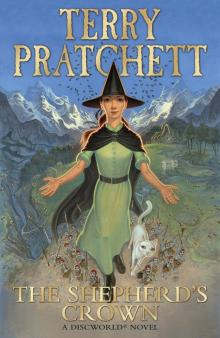 The Shepherd's Crown
The Shepherd's Crown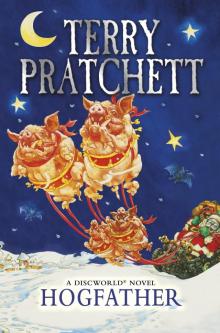 Hogfather
Hogfather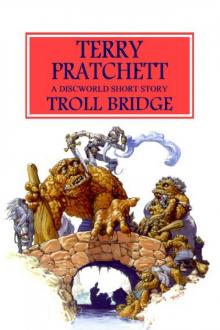 Troll Bridge
Troll Bridge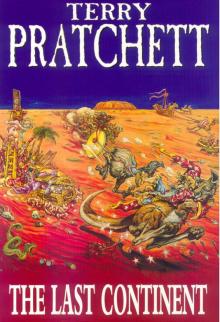 The Last Continent
The Last Continent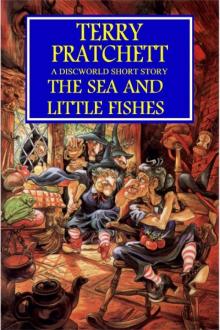 The Sea and Little Fishes
The Sea and Little Fishes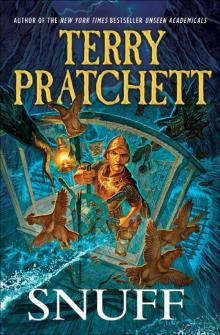 Snuff
Snuff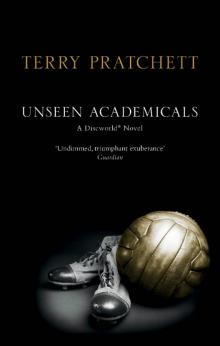 Unseen Academicals
Unseen Academicals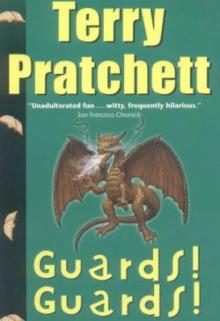 Guards! Guards! tds-8
Guards! Guards! tds-8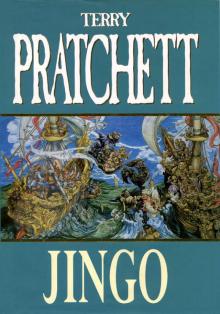 Jingo d-21
Jingo d-21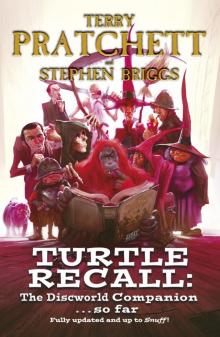 Turtle Recall: The Discworld Companion ... So Far
Turtle Recall: The Discworld Companion ... So Far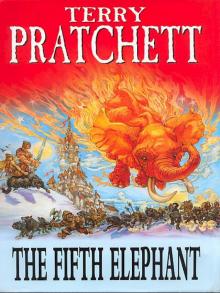 The Fifth Elephant d-24
The Fifth Elephant d-24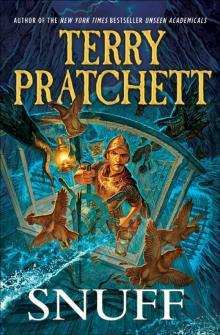 Discworld 39 - Snuff
Discworld 39 - Snuff The Long War
The Long War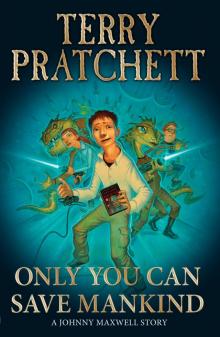 Only You Can Save Mankind
Only You Can Save Mankind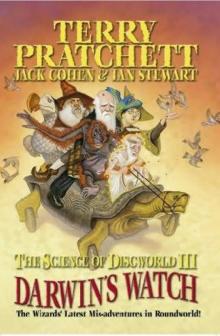 The Science of Discworld III - Darwin's Watch tsod-3
The Science of Discworld III - Darwin's Watch tsod-3 A Blink of the Screen: Collected Short Fiction
A Blink of the Screen: Collected Short Fiction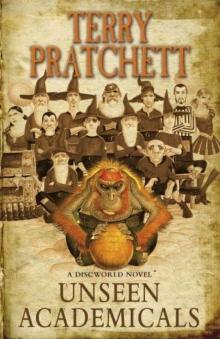 Unseen Academicals d-37
Unseen Academicals d-37 Wings
Wings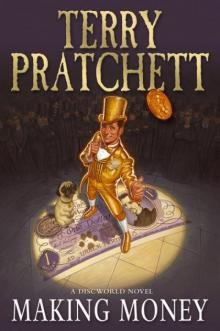 Making Money d-36
Making Money d-36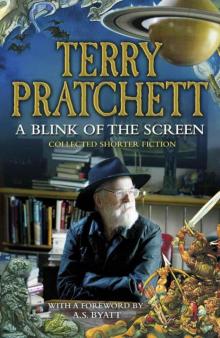 A Blink of the Screen
A Blink of the Screen Johnny and the Bomb
Johnny and the Bomb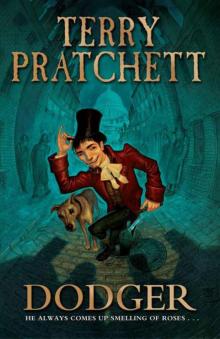 Dodger
Dodger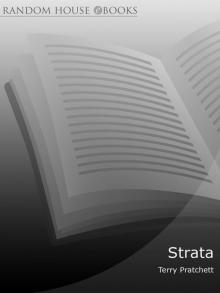 Strata
Strata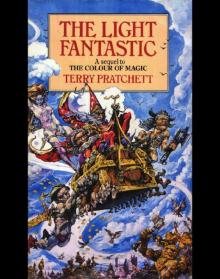 Discworld 02 - The Light Fantastic
Discworld 02 - The Light Fantastic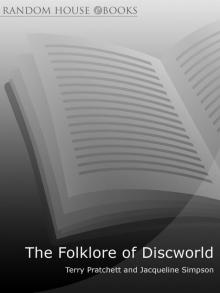 The Folklore of Discworld
The Folklore of Discworld The Science of Discworld
The Science of Discworld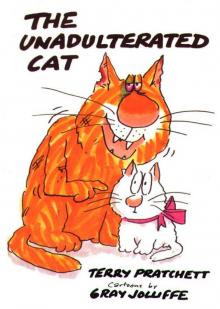 The Unadulterated Cat
The Unadulterated Cat Raising Steam: (Discworld novel 40) (Discworld Novels)
Raising Steam: (Discworld novel 40) (Discworld Novels)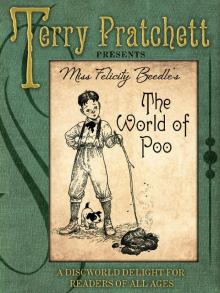 The World of Poo
The World of Poo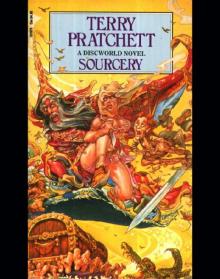 Discworld 05 - Sourcery
Discworld 05 - Sourcery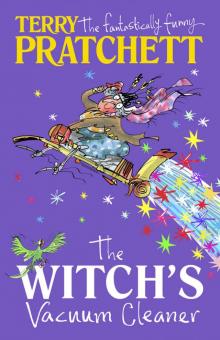 The Witch's Vacuum Cleaner: And Other Stories
The Witch's Vacuum Cleaner: And Other Stories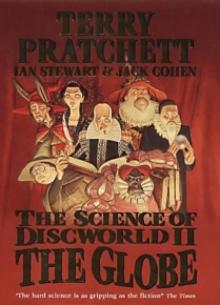 The Science of Discworld II - The Globe tsod-2
The Science of Discworld II - The Globe tsod-2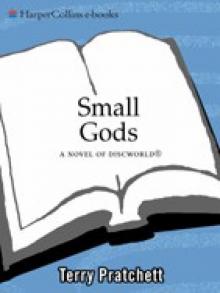 Small Gods: Discworld Novel, A
Small Gods: Discworld Novel, A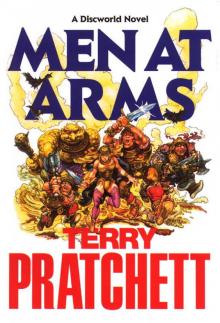 Men at Arms tds-15
Men at Arms tds-15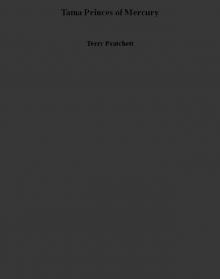 Tama Princes of Mercury
Tama Princes of Mercury The Last Hero (the discworld series)
The Last Hero (the discworld series)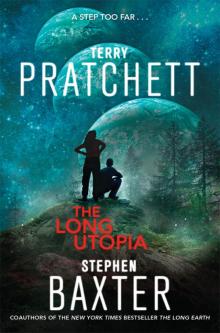 The Long Utopia
The Long Utopia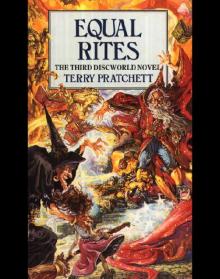 Discworld 03 - Equal Rites
Discworld 03 - Equal Rites Terry Pratchett - The Science of Discworld
Terry Pratchett - The Science of Discworld The Long Earth
The Long Earth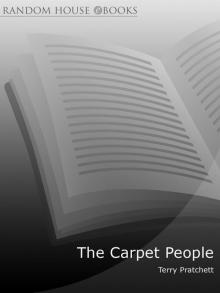 The Carpet People
The Carpet People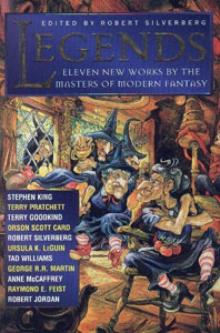 The Sea and Little Fishes (discworld)
The Sea and Little Fishes (discworld)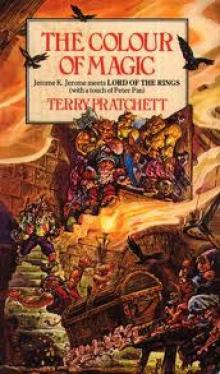 The Colour of Magic
The Colour of Magic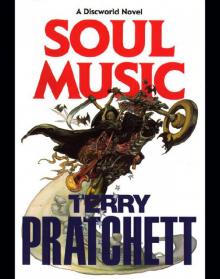 Discworld 16 - Soul Music
Discworld 16 - Soul Music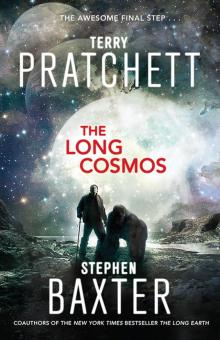 The Long Cosmos
The Long Cosmos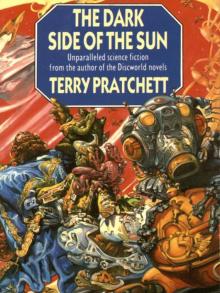 The Dark Side of the Sun
The Dark Side of the Sun Monstrous Regiment tds-28
Monstrous Regiment tds-28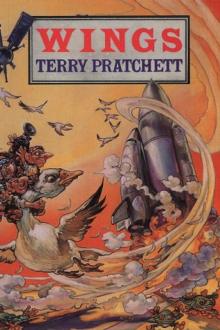 The Bromeliad 3 - Wings
The Bromeliad 3 - Wings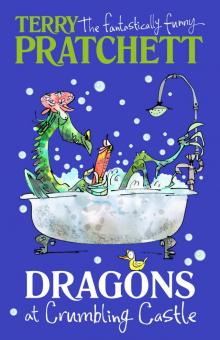 Dragons at Crumbling Castle: And Other Stories
Dragons at Crumbling Castle: And Other Stories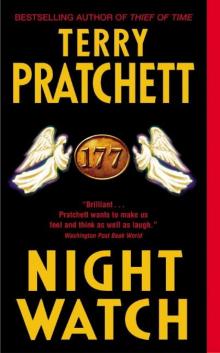 Night Watch tds-27
Night Watch tds-27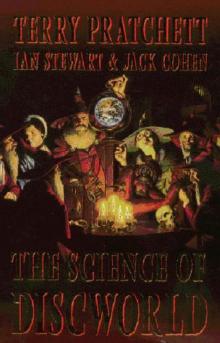 The Science of Discworld I tsod-1
The Science of Discworld I tsod-1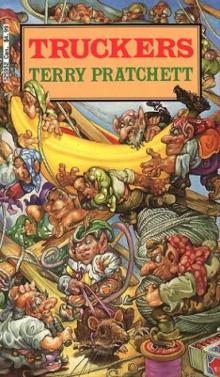 The Bromeliad 1 - Truckers
The Bromeliad 1 - Truckers The Science of Discworld Revised Edition
The Science of Discworld Revised Edition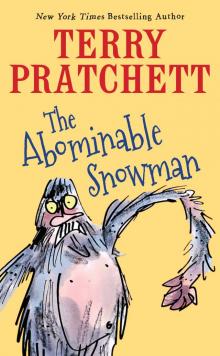 The Abominable Snowman
The Abominable Snowman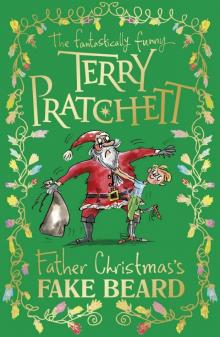 Father Christmas’s Fake Beard
Father Christmas’s Fake Beard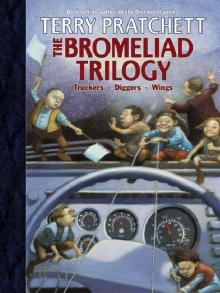 The Bromeliad Trilogy
The Bromeliad Trilogy A Slip of the Keyboard
A Slip of the Keyboard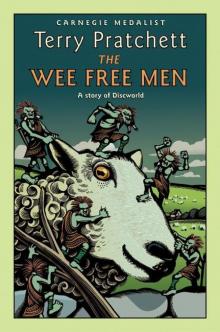 The Wee Free Men d(-2
The Wee Free Men d(-2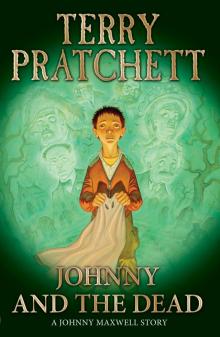 Johnny and the Dead
Johnny and the Dead Mrs Bradshaw's Handbook (Discworld Novels)
Mrs Bradshaw's Handbook (Discworld Novels)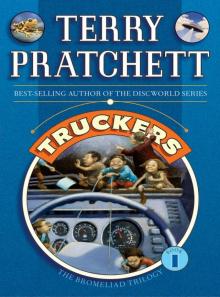 Truckers
Truckers The Amazing Maurice and His Educated Rodents d(-1
The Amazing Maurice and His Educated Rodents d(-1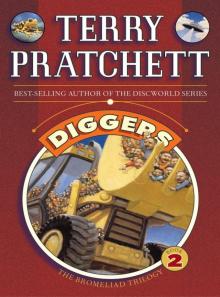 Diggers
Diggers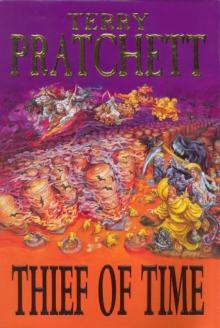 Thief of Time tds-26
Thief of Time tds-26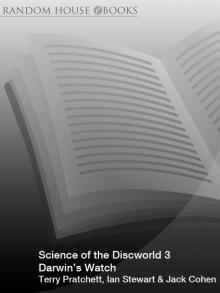 Science of Discworld III
Science of Discworld III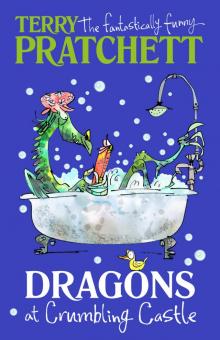 Dragons at Crumbling Castle
Dragons at Crumbling Castle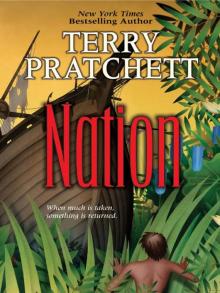 Nation
Nation Darwin's Watch
Darwin's Watch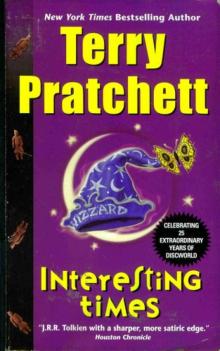 Interesting Times d-17
Interesting Times d-17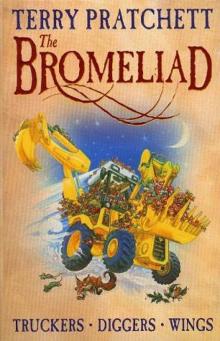 The Bromeliad 2 - Diggers
The Bromeliad 2 - Diggers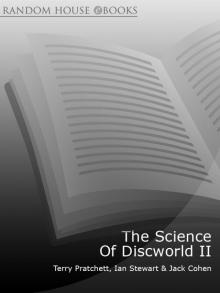 The Science of Discworld II
The Science of Discworld II